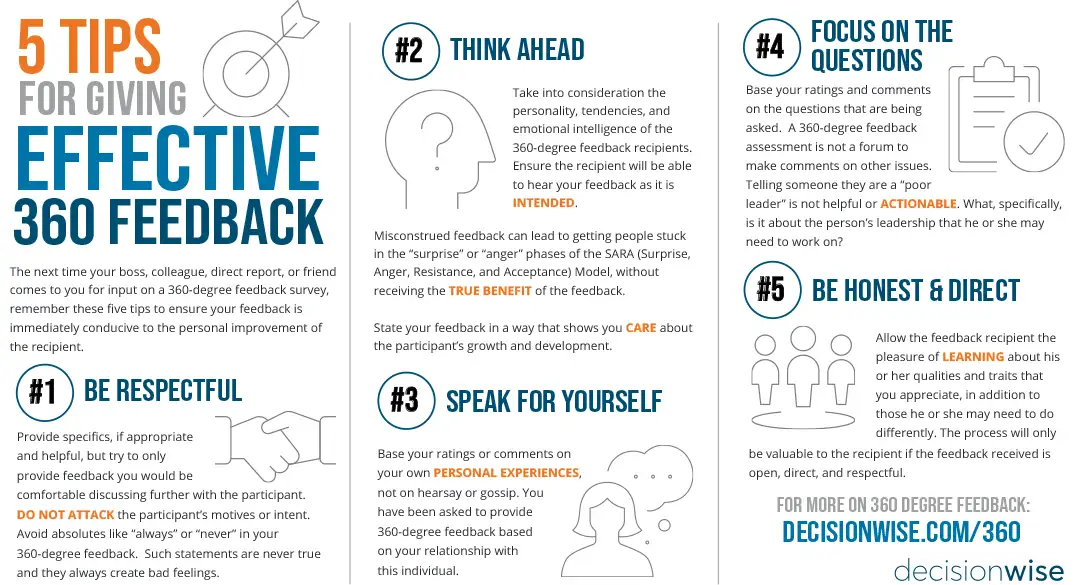Download the Infographic in PDF Format:
Even the best-designed 360 degree feedback process is ineffective if the feedback provided isn’t helpful to the recipient. Some of us may struggle at providing effective 360 degree feedback. Perhaps we’re too critical, or perhaps we intentionally avoid providing feedback that we know the recipient needs to hear, but may not like.
Regardless of the reason for not providing this valuable feedback, raters everywhere need to step up their game. So, next time you’re asked to provide feedback, throw out the old habits and follow these five tips for giving effective 360 degree feedback to better help the recipient.
1. Think Ahead
As a rater, provide candid comments. However, that doesn’t mean you should write your comments on impulse or without much thought. Instead, take into consideration the personality, tendencies, and emotional intelligence of the 360-degree feedback recipients. By taking this into consideration, you will ensure the recipient will be able to hear your feedback as it is intended; misconstrued feedback can lead to getting people stuck in the “shock” or “anger” phases of the SARA (Shock, Anger, Resistance, and Acceptance) Model, without receiving the true benefit of the feedback. State your feedback in a way that shows you care about the participant’s growth and development. Delivering 360-degree feedback from this perspective increases the likelihood of a positive and productive experience for everyone involved.
2. Be Respectful
Provide specifics, if appropriate and helpful, but don’t blindside someone with feedback he or she has not received before, and do not attack the participant’s motives or intent. Also, avoid absolutes like “always” or “never” in your 360-degree feedback. Such statements are never true and they always create bad feelings (see what I did there?).
3. Speak For Yourself
Base your ratings or comments on your own personal experiences, not on hearsay or gossip. You have been asked to provide 360-degree feedback based on your relationship with this individual.
4. Focus on the Questions
Base your ratings and comments on the questions that are being asked. A 360-degree feedback assessment is not a forum to make comments on other issues, such as closing the department on weekends, receiving higher wages, or creating a better benefits plan. Furthermore, telling someone they are a “poor leader” is not helpful or actionable. Answer the question being asked, and be specific. What, specifically, is it about the person’s leadership that he or she may need to work on?
5. Be Honest
Allow the feedback recipient the pleasure (and possibly the relief) of learning about his or her qualities and traits that you appreciate, in addition to those he or she may need to do differently. The 360-degree feedback process will only be valuable to an individual recipient if the feedback received is open, direct, and respectful.
Next time your boss, colleague, direct report, or friend comes to you for input on a 360-degree feedback survey, remember these five points to ensure your feedback is immediately conducive to the personal improvement of the recipient.






